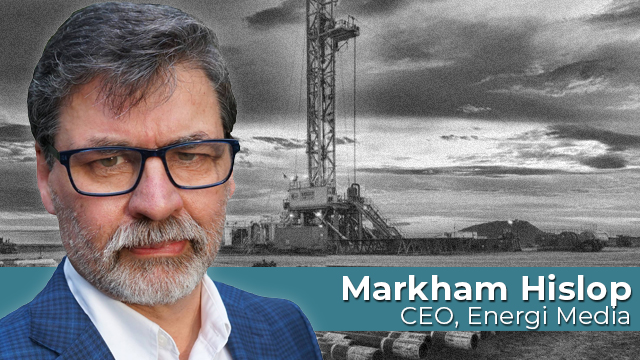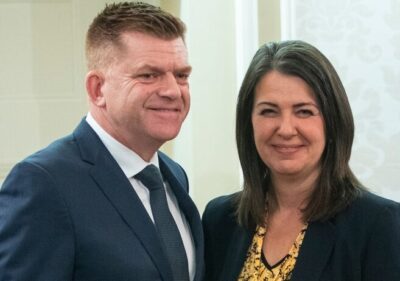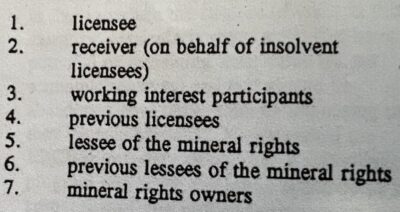
“…the public purse should not be at risk because of orphan wells.” JR Nichol, senior ERCB executive
Three decades ago, the oil industry cut a deal with the Alberta government that it would pay to clean up orphaned wells. Not just newer orphans, not just low-cost wells, but every last one of them. Now the UCP is trying to modify that deal to put taxpayers on the hook for tens of billions of dollars.

Premier Danielle Smith’s July 10 mandate letter to Energy Minister Brian Jean includes developing “a strategy to effectively incentivize reclamation of inactive legacy oil and natural gas sites, and to enable future drilling while respecting the principle of polluter pay.” This sounds exactly like Smith’s RStar proposal, which would have provided $20 billion of drilling credits to oil companies that and cost the public purse between $6 billion and $12 billion of foregone revenue depending upon how the program was designed.
RStar would violate an agreement between the Energy Resources and Conservation Board (ERCB) and industry from the early 1990s. The regulator ended reclamation security requirements in 1986 and struggled afterward to design regulations that would force oil and gas companies to clean up their depleted wells. Representatives from the ERCB, industry, the energy and environment departments, and the financial community worked for years on the Orphan Well Task Force to find a solution.
The negotiations and the deal cut by the parties is described in detail by senior ERCB executive JR Nichol in a presentation to a 1991 drilling conference in Calgary.
“The Board has taken and continues to take the position that the public purse should not be at risk because of orphan wells,” Nichol told his audience. While it was not called “polluter pay” then, the principle was long accepted in Alberta that oil companies, not the government, should pay to clean up their old wells.
“That led the ERCB to a philosophical approach that, in essence, said those who benefitted from the well should be responsible to look after its proper abandonment,” Nichol said.
This is a critical point. Industry was allowed to shape Alberta’s policy on well cleanup because they had agreed to accept the financial risk of orphans.
For decades, the big producers drilled most of the wells in Alberta. When production fell, making the wells less profitable, they were sold to smaller companies. The wells’ final home was often with “stripper” operators, mom and pop operations with shoestring budgets that squeezed the last few drops from the wells. Stripper well businesses often failed during oil and gas price downturns, orphaning their wells and associated infrastructure, like facilities.

The ERCB wanted to put the responsibility for clean up back on the big producers who had profited most during the early life of the well. The Board proposed a “chain of responsibility in descending order” (graphic on right). Numbers four through six would have captured previous beneficiaries of an orphan well’s revenue.
“As could be expected,” Nichol said, “industry was extremely concerned about the length of this chain of responsibility, particularly the idea that one would continue to be responsible for a well even after selling that property to another individual or company.”
Here is the most important point.
“Industry has thus recommended that the chain be limited to the current licensee and working interest participants and the receivers on behalf of any or all of those parties,” Nichol said, “and that an industry-sponsored fund be established to pay for the share of abandonment costs of bankrupt owners [emphasis added].”
This is the heart of the deal between the Alberta public and Alberta oil and gas companies: in return for not making previous owners liable for wells they had sold, often many years before, industry agreed to be responsible for orphan wells.
The ERCB had already created a $3 million Special Well Fund after it stopped taking security. This morphed into the Abandonment Fund in 1993. In 2001, the Alberta government created the Orphan Fund, and the non-profit Orphan Well Association (OWA) to do the decommissioning work, the set up as it exists today. Under current legislation, wells only become orphans when the AER transfers them to the OWA inventory, which today contains about 7,000 wells.
What has changed in 30 years is the magnitude of the problem. Until a few years ago, the Orphan Fund levy, paid for by every oil and gas company in the province, was not an onerous obligation for industry. But in 2022 the levy ballooned to $72 million and in 2023 is up to $135 million.
On top of the levy, the UCP introduced the Inventory Reduction Program in 2022 that requires a mandatory annual spend on well closure. The AER told Energi Media in an email that the industry spent $600 million last year, 40 per cent above the minimum, and that the mandatory minimum will increase each year, reaching $992 million in 2027.
The total estimated unfunded conventional oil and gas liabilities in Alberta are $100 billion to $130 billion. For more context, including a thorough discussion of the liabilities calculations, please read Energi Media’s recently published Unethical Oil Part 2: Alberta’s orphan well crisis.
Who’s going to pay that bill?
The Alberta oil and gas industry has a long history of evading responsibility for clean up. That, combined with toothless and ineffective regulation, as well as a captured government and department of energy, is why the province now confronts an enormous orphan well crisis.
To Smith’s credit, her government’s 2020 Liability Management Framework is a big improvement and the Inventory Reduction Program is the first serious attempt in years to tackle the “inactive/suspended” (82,635 wells) category that is chock-a-block with de facto orphans. There still remains, however, the “abandoned site not reclaimed” (90,991 wells) that require additional work. Hovering off-stage are the 95,000 “marginal producers” (pumping under 10 barrels per day of oil equivalent) that will in the not too distant future be moving into inactive/suspended.
In an email to Energi Media, Jean says that in “Alberta we have a unique situation where we have sites that have been left on private or public lands for decades, that will only cause more environmental challenges the longer they sit. Many of these sites have been left by actors that are no longer in existence – but for the ones owned by companies still in operation, I will explore every tool in my disposal to ensure the sites are cleaned up by these operators.”
This is a bit of misdirection from Jean because he doesn’t really address the question of who pays.
Alberta legislation, policy, and regulatory history say industry pays. The deal struck in the early 1990s says industry pays. The new Liability Management Framework and Inventory Reduction Program say industry pays. The Minister, however, has left open the question of who pays to clean up what type of well.
His comment that one option is “creating rules that favour new permits for companies that excel at cleaning up old sites” sounds dangerously close to RStar.
Jean adds that he still has “to do my due diligence and go through vigorous engagement sessions with all parties to ensure the best possible outcomes for Albertans, land owners, and our environment.” Fair enough. But we’ll see who he consults with. The UCP have a bad habit of not talking to Albertans who disagree with them.
There is a very real danger that if the UCP eventually agrees to pay to clean up old wells, it will create a “moral hazard” – if you do something wrong once, it becomes easier to do again and again – that could put taxpayers on the hook for a huge financial obligation in the future.
And in that case, the decision would violate the agreement that industry proposed 30 years ago.
“I would like to congratulate industry on the very positive and well-thought-out approach that it has taken towards the resolution of this problem,” Nichol said in his closing remarks to the drilling conference three decades ago.
If the deal between government and industry was good enough then, government and industry must explain to taxpayers why it isn’t good enough today. The people who pay the bills deserve a thorough explanation.


Be the first to comment